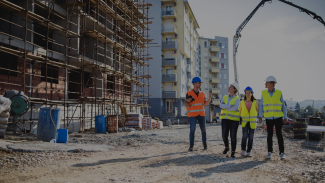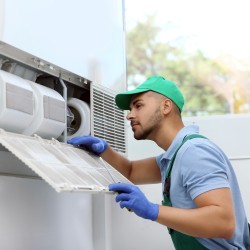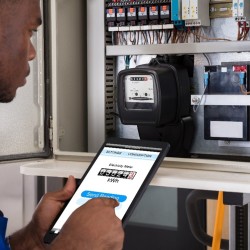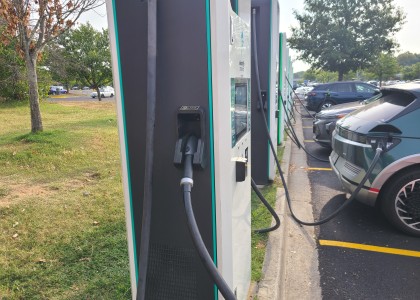Recent legislation has dedicated historic levels of funding to climate change mitigation through energy-efficient technologies, retrofits, and decarbonization. As a result, enormous changes are possible in our buildings—how we design, build, heat, cool, and use them.
But this can only happen with a qualified workforce: the buildings industry needs enough boots on the ground who know how to do the complex work of creating, operating, and maintaining these buildings and the equipment inside (and outside) them. Even today—with rising interest, demand, and incentives for heat pumps nationwide—we do not have enough qualified contractors who know how to size, install, and repair heat pumps and heat pump water heaters in American homes. This is a microcosm of a more significant problem and will impede our progress toward building decarbonization.
The size and capabilities of our workforce may be the single biggest obstacle to achieving the full potential of the Inflation Reduction Act (IRA) and Infrastructure Investment and Jobs Act (IIJA).
Yet there are many possible pipelines to creating this workforce, including four-year colleges, community colleges, labor unions, and apprenticeship programs. These have long been engines of workforce development in the United States.
It’s Time to Rethink How We Teach and Train Our Buildings Workforce: They Can Shape Our Future
How do we prepare these students, early career technicians, and experienced professionals for low- and zero-carbon buildings? Education and training are the foundation, but have we done these correctly and efficiently? Too often in the past, training and retraining programs have been hyperfocused—e.g., how to run energy analyses using a specific software program, how to operate a single type of HVAC equipment, or how to perform energy audits in homes.
When we train too narrowly, we underestimate students’ abilities; we limit their upward mobility, career options, and earnings potential; and we hinder the transformative role they could play in the buildings market. If we view and train students and workers as entrepreneurs, we can develop a more robust workforce of individuals who can create jobs for themselves and others. Imagine if a contractor called to fix a leaking roof could help the homeowner insulate that roof or install solar panels at the same time; or a contractor called to upgrade a kitchen could help the homeowner electrify their old water heater, convert to an induction cooktop, or replace all their faucets with more efficient models; or a contractor called to replace HVAC equipment could help the homeowner insulate their walls and upgrade their windows before sizing a heat pump.
Historically, we have trained our workforce in a more reactive than proactive way. We try to predict the future—the necessary skills, the in-demand jobs—based on the present or past. Buildings are an unusual challenge because their pace of change is both slow and fast. Slow because an average building can last 70 or 80 years. My back-of-the-envelope calculation shows that it will take about 100 years for a complete turnover of U.S. commercial and residential buildings (this doesn’t include historic buildings). But the buildings that will get us to a decarbonized future will depend on technology that changes fast: We have seen 14 generations of the iPhone in 15 years. New cars are fully redesigned about every five to seven years. High-performance buildings depend on many of the same rapidly changing features as our phones and cars—such as wireless sensors, smart devices, and big data—to interact with the Internet of Things, which includes large-scale components like the electric grid and other buildings in the community, and small-scale ones like electric vehicles and personal devices.
If We Want Adaptable Buildings, We Need Adaptable Buildings Professionals
The pandemic has highlighted the unpredictable role of buildings in our lives. Some cities are exploring converting empty offices into housing and transforming downtown neighborhoods. The challenge is that most buildings are not designed to be versatile. In Washington, DC, just 1 in about 20 office buildings is a good candidate for housing conversion. Similarly, a mere 3 percent of office buildings in New York City would be viable for apartment conversion. We need to remember this lesson when we build or upgrade our buildings today and tomorrow, and when we educate the workforce that will create and operate them. For example, One Vanderbilt, once a model of environmental leadership in New York City, is facing the possibility of retrofitting after a short time because of new local policies steering the city toward an all-electric future. The breakthrough in residential cold-climate heat pump technology is good news for future new homes, but what about recently constructed “new” homes that will run on fossil fuels for decades? We cannot predict future changes, but we should have a plan to adapt to them.
We want a workforce to imagine and shape—not just maintain and fix—this complex future of buildings. Let’s give students the skills to do that. Entrepreneurial, creative, critical, and expansive thinking are often seen as the domain of four-year colleges or graduate schools. This way of thinking underestimates community college students, vocational and technical students, building and mechanical technicians, and even established professionals in the building trades. These individuals see what is happening on the ground: homeowners’ and building owners’ practical needs and obstacles, customer concerns and pain points, supply chain problems, and more. Students will be ready to lead if they develop versatile hard and soft skills, a forward-thinking mindset, and career paths with longevity. Community college enrollment has declined by almost 40 percent in the last decade, which some see as a “national crisis of confidence” in an educational option that has long served as a gateway to either solid employment or further study at a four-year school. Let’s rethink how we serve these students. Community colleges can develop programs that meet industry needs, but there’s no reason those programs have to be hyperfocused on a specific technology that will inevitably have an expiration date.
Meanwhile, we can do a better job of curating existing training and curricula and fine-tuning outreach so that existing educational opportunities and resources reach a larger audience.
Climate Funds Can Help Build the Workforce—but Not through More Webinars
Unfortunately, there is limited funding in IIJA and IRA dedicated for workforce or occupation-specific training. In many cases, funds can be used for workforce development and technical assistance; however, they are not earmarked for that specific purpose. It's up to federal agencies and eligible grant recipients (states, municipalities, tribes) to develop programs to support workforce development. For example, through IIJA and IRA, the Department of Energy (DOE) is administering over $250 million in grants to help states, nonprofits, and industries prepare the workforce to deliver energy efficiency and electrification projects.
Federal agencies and state and local governments should put these limited resources into activities that will start to create an entrepreneurial and adaptable workforce. Many training curricula have been developed in the public and private sectors in recent years. For example, DOE’s Better Buildings Solutions site contains hundreds if not thousands of webinars, trainings, courses, and other resources developed over the past decade or so on topics from data analysis to sustainability in healthcare and sports facilities. It is unknown how much of this work has been used effectively. Rather than creating even more online and classroom training, public funds should focus on using these existing resources through effective outreach and networking, and on creating a cohesive framework to track and evaluate workforce development programs to guide future public investments in training. Educators should focus on adding vision-driven, skill-based components to their curricula, prioritizing the types of synthetic, expansive skills that the workforce should have. For example, a recent ACEEE report on training the workforce for high-performance buildings identified five categories of broad and complex (yet underdeveloped) skills the workforce needs.
Today’s labor shortage is a challenge and an opportunity. We need to reimagine workforce education so that today’s students see themselves as the creators—not just the maintainers—of tomorrow’s buildings.






